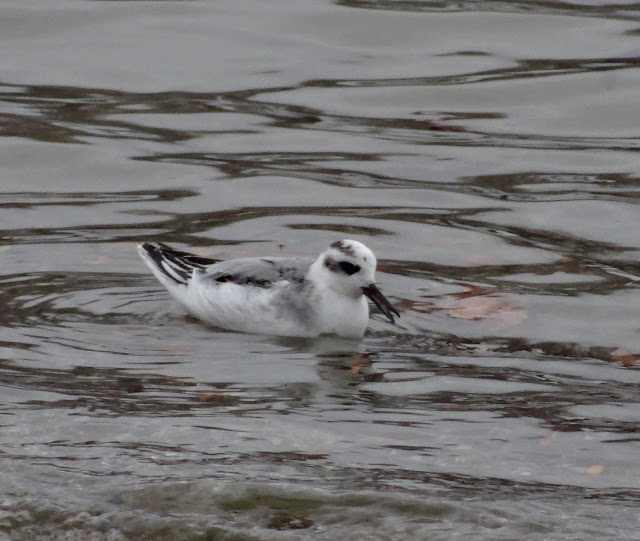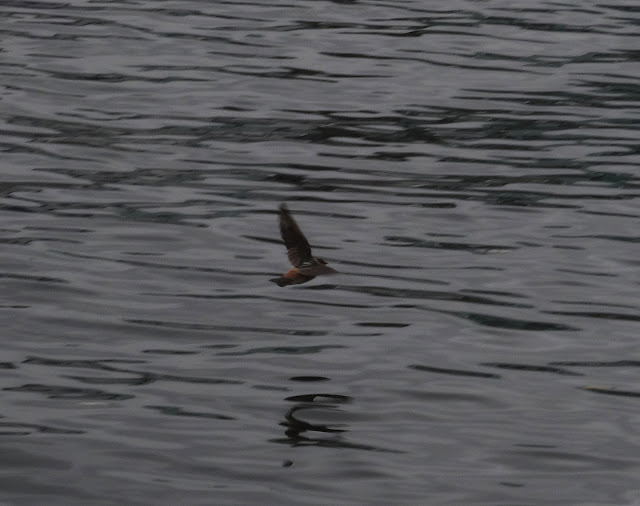This morning I dropped Caitlyn off at a dentist appointment in Guelph, and when she got out, I read the reports coming in from Bronte Harbour of a Red Phalarope and Cave Swallows. We decided to get some lunch from Mucho Burrito and make the short drive down to the lake shore. Immediately upon arriving at the marina we saw birders looking into the water, and quickly spotted the Red Phalarope right on the shore, seemingly oblivious to the birders and photographers (some within 6-8ft!). I decided that approximately 25ft was close enough, no need to stress a bird or risk scaring it away.
Red Phalarope is a species of shorebird that breeds in the high arctic and passes through Ontario on its way to wintering grounds in the ocean off of South America and occasionally as far north as North America. You may not be able to tell, but this is a tiny bird, weighing only 2 ounces! Nonetheless, it is remarkably hardy and is a pelagic species that spends most of its time far out on the open ocean!
 |
| Red Phalarope |
I asked some birders where the Cave Swallows had been seen, and someone said they were in the marina right behind me! We quickly walked over there and immediately saw two of them foraging for invisible flies in the sheltered side of the marina. This is the first time I have seen Cave Swallow in Ontario! What a treat to have two flying literally within feet of the birders present, right over our heads! They are too fast to get good photos with my point and shoot, but that didn't stop me from trying.
Cave Swallows are typically found in Texas and Mexico, but the past few weeks of warm south winds have facilitated their movement far to the north! As much as I love seeing this rare bird, I can't help but wonder how much longer they can survive. The insect populations are dwindling (it was snowing in Fergus today)!
 |
| Cave Swallow |
In Bronte Harbour, a bonus Snowy Owl was perched on the breakwall. This is a good spot for them, it is likely that they are feeding on the abundant waterfowl which are often present here.
What a day, the Cave Swallows were my 260th bird species for me in Ontario this year!


















































